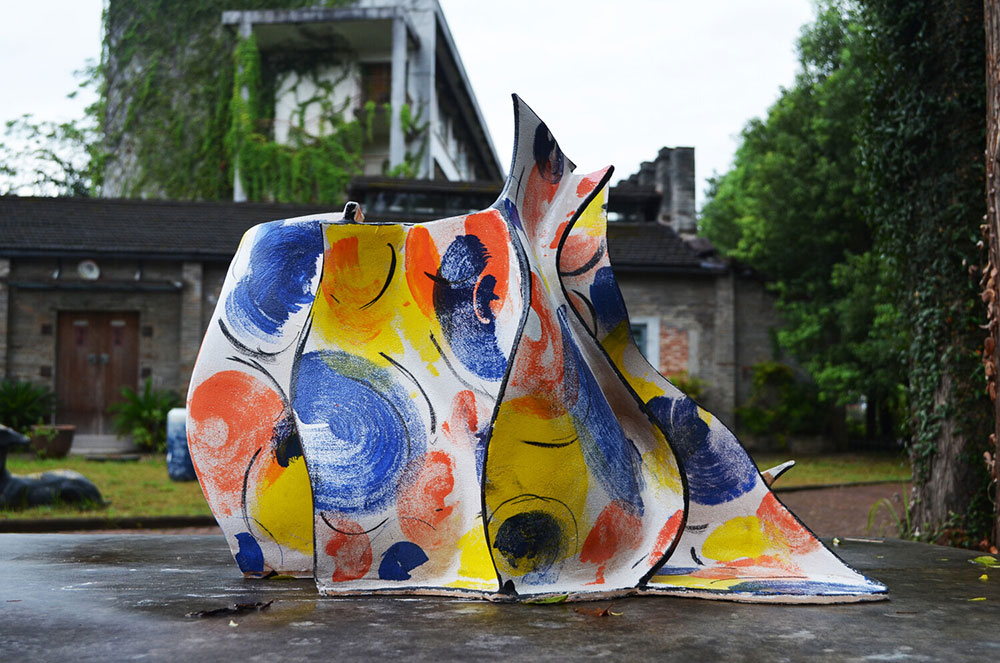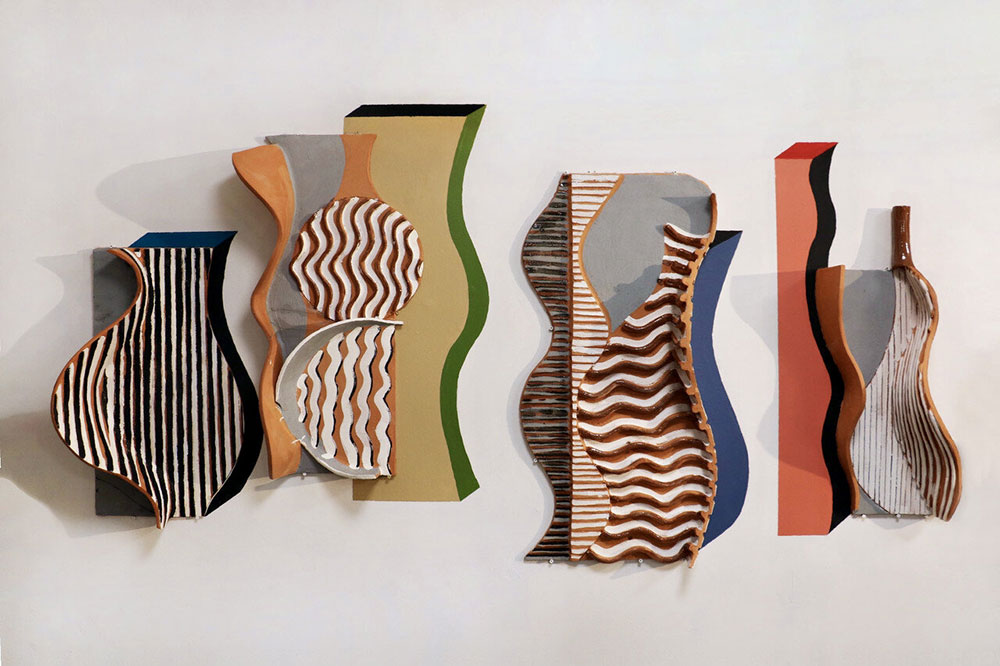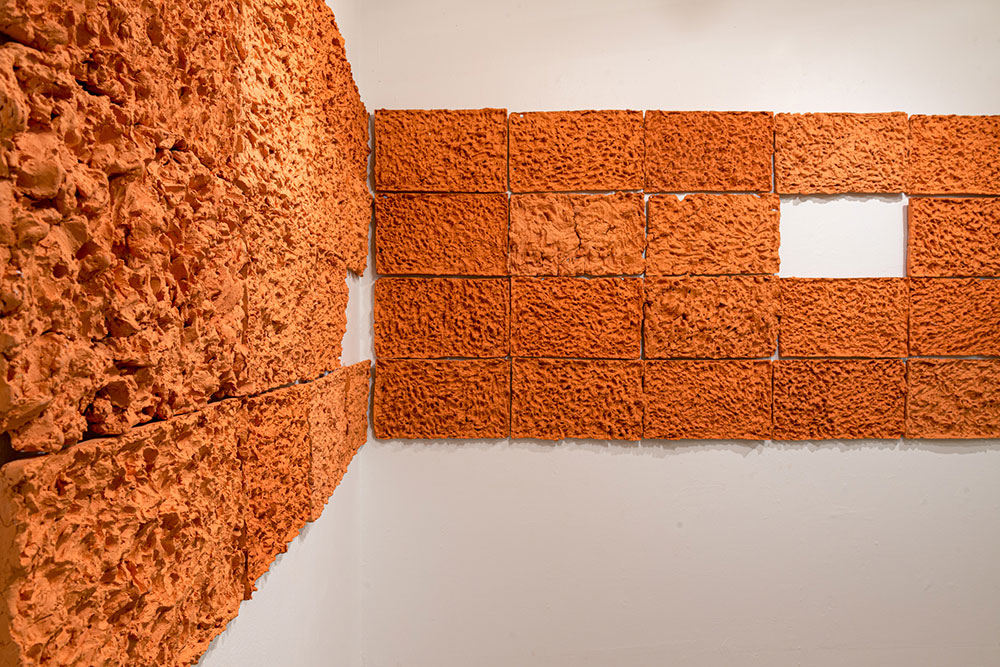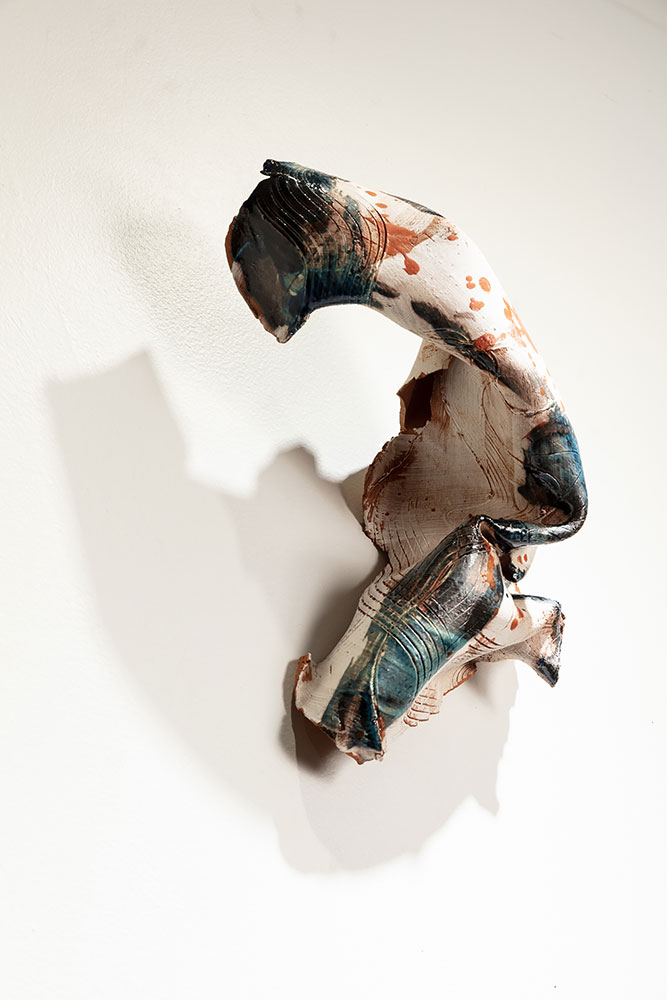I’m originally from China and moved to the United States when I was 16. Ceramics runs in my family, and it has been a significant part of my artistic journey. Primarily focusing on installation and sculpture, I also dabbled in design and explored various creative avenues, but clay remains my primary material.
Born: Jingdezhen, China
Now: Chicago, United States
@Funcoration | www.nanxijin.com
INTERVIEW
Tell us, when did your interest in ceramics arise in your life, and what gave impetus to get an education in this direction?
My interest in ceramics began during my sophomore year of college. Growing up in a family of ceramic artists in China, I was exposed to clay from a young age. However, it was during my college years that I truly discovered my passion for this medium. The tactile nature of clay, its ability to be molded and shaped, fascinated me. It allowed me to bring my artistic visions to life in three-dimensional forms. This drove me to pursue an education in ceramics, as I wanted to further explore and develop my skills in this artistic discipline.

Share with readers the story of your experience as an intern in galleries and as a teaching assistant. What did you learn during this period, and which of the works left a deep impression or changed your art thinking?
My experience as an intern in galleries and as a teaching assistant was invaluable to my growth as an artist. During this period, I had the opportunity to work closely with established ceramic artists and learn from their expertise. As an intern in galleries, I gained insight into the professional art world, observing the curation and exhibition processes. As a teaching assistant, I not only honed my technical skills but also learned how to effectively communicate and share my knowledge with others.
As a teaching assistant, I not only honed my technical skills but also learned how to effectively communicate and share my knowledge with others.

You have the experience of an artist in two worlds – after all, you started your activity in China and have been actively working in the USA in recent years. Do you feel the imprint of your native culture in your work? And how have your works changed amid the integration?
As an artist who has experienced both the Chinese and American cultures, I believe my native culture has undeniably influenced my work. Growing up in China, I was immersed in a rich artistic heritage that emphasized traditional craftsmanship and symbolism. These influences can be seen in the attention to detail and the reverence for cultural motifs that I incorporate into my ceramic pieces. However, my works have also evolved and changed through the integration of my experiences in the USA. Being exposed to diverse artistic perspectives and engaging with a broader range of materials and techniques has expanded my artistic vocabulary. It has allowed me to blend elements of both cultures, creating a unique artistic voice that reflects my personal journey and cross-cultural influences.
Speaking of your work, there is a powerful message in the At The Moment series. Even without reading the project description, you visually feel the energy of the work. This series is a reflection on emotions during Covid. Tell us in what conditions this work was created, what emotions filled you during the creation and how quickly did you make it?
The At The Moment series was created during the challenging times of the Covid-19 pandemic. The work emerged from a place of deep introspection and reflection. Touch starvation is a consequence of the pandemic. Since COVID-19 entered our lives, lockdown and isolation have forced most of us to work and study remotely through electronic devices. The screen and the keyboard have become the primary communication objects that have allowed us to communicate within different places simultaneously. I use the rectangular shape to mimic the screen to present our current tedious moment of staring at zoom and not having a face-to-face conversation.
While creating the series, I was filled with a mix of emotions—fear, anxiety, hope, and resilience. These emotions fueled my creative process and guided the expressive forms and textures in the artwork. The urgency and significance of the subject matter drove me to work swiftly, pouring my emotions into each piece as a way of processing and responding to the global crisis.
It take me a semester to finish it. Roughly four months from idea to finished fabrication.

Tell us about your Escape plan project. This is also a very powerful work – you feel some kind of struggle and release in it – you work great with space and forms! When was this work created and where did you present it?
Escape plan is the work I present for my thesis show last year at the SAIC gallery. Escape Plan is an avant-garde artwork that delves into the themes of materiality, space, and self-exploration in the context of my background in a traditional ceramic city, where perfection is highly esteemed. This upbringing prompted the artist to question the essence of clay and its boundless potential. Clay, as a paradoxical medium, embodies both fragility and resilience, retaining the tactile experiences and emotions imprinted upon it over time.

How do you see the next period of work – what projects do you want to implement, and what tasks do you set for yourself (maybe a further internship or work in a large international project)?
Looking ahead to the next period of my work, I envision implementing several exciting projects. One of my primary goals is to continue pushing the boundaries of ceramic sculpture by exploring new materials and embracing mixed-media approaches. By incorporating diverse materials and techniques, I aim to expand the expressive potential of my artworks and explore new dimensions of creativity. I want to engage in collaborative projects with artists from different backgrounds and disciplines. I believe that cross-disciplinary collaborations can bring fresh perspectives and enrich the artistic process, leading to innovative and meaningful creations.
What advice would you give to aspiring artists?
My advice to aspiring artists would be to embrace their unique artistic journey and never stop exploring and experimenting.
It is essential to cultivate a strong foundation of technical skills and knowledge, but equally important to nurture one’s creativity and individual voice.
Don’t be afraid to take risks, challenge conventions, and push the boundaries of your chosen medium.
Seek opportunities to learn from experienced artists, whether through mentorships, internships, or collaborative projects. Embrace both successes and failures as valuable learning experiences, and never lose sight of the passion and joy that art brings to your life.